
An audio crossover is a handy electronic tool. It is designed to take one signal and create specific output alerts. These indicators are composed of high-, mid-, and low-range frequencies. The signals are then transmitted to the sound system of your rig. The result is mostly high fidelity sound and enhanced sound quality.
There are numerous models of audio crossovers for vehicles on the market. In this post, we will review 5 of the best options and a manual that allow you to understand and choose the best model for your car.
Table of Contents
The Best Car Audio Crossover
The first unit on this roundup is a first-rate product from Clarion Mobile Electronics. It is one of the best automobile audio crossovers on the market. We have used quite a number of audio crossovers and spent hours studying and testing scores of these products. From our studies and testing, the Clarion MCD360 is hands down one of the top you could purchase today.
Performance
From a performance standpoint, it delivers great sounds, specifically for the front stage.
As a 6-channel electronic crossover, it offers lots of capability and versatility. It is an active audio crossover. Therefore, it is greener than numerous others at the market. It ensures that the amplifier would not waste useful time and energy amplifying undesirable frequencies.
Active audio crossovers are notoriously harder to put in than their passive counterparts. Therefore, you would be excused for thinking that this unit is simply the same. It is relatively simpler to install, especially if you already have an amplifier installed.
Impression
It also enhances bass overall performance, although not as much as do a number of the others in this review. It is a gamechanger with the intention to increase the sound excellence of your car’s audio system.
-
Excellent front stage
-
Versatile and adjustable
-
Relatively easy to set up
-
Rather small bass knob
The on-board pre-amp line driver ensures clear sound reproduction, while the master volume control and fader let you adjust the volume just the way you like it. The compact ½ DIN chassis fits discreetly in most vehicles.
Performance
Audio Control Three.2 is the perfect way to enhance the sound quality of your car stereo system. This handy little device provides two input channels, allowing you to easily connect two devices at the same time. You can also choose between two, four or six channels of output, making it easy to find the perfect settings for your specific needs.
Impression
The stereo and para-bass equalization controls let you tweak the sound to perfection, while the on-board pre-amp line driver ensures great sound quality no matter what type of music you’re listening to.
Plus, with its cool blue or hot red LED illumination, this product will add a touch of style to your dash.
-
Excellent tool with powerful overall performance
-
Compact size
-
Easy to install
-
No remote bass control
The next unit on our list is a popular and highly rated model. BOSS Audio is one of the most popular producers in this industry. It has consistently produced some superb products, and this unit is one of the finest from the maker.
Design
It is a 3-way digital automobile crossover. It comes in a pleasing design that looks outstanding in your automobile. Knobs are robust and easy to reach. It does its job pretty well. During our testing, we actually put it through its paces, and it got out with fantastic sound.
Considering the price, it truly offers a wonderful value.
Impression
If you are serious about your car audio, then you certainly cannot go wrong with this version. We noticeably recommend it in case you need each drive to be a splendid audio experience.
The disadvantage we discovered about this unit is that the dials turn too easily. Other than that, it provides some of the greatest sound quality we’ve heard.
If you are looking for an easy-to-use unit that delivers nice sound, you then closely have to consider this unit.
-
Nice design
-
Affordable
-
Excellent sound
-
The dials turn too easily
The penultimate model on this unit is from Boss Audio Systems, the same producers of the unit above. It is not a huge surprise to see that the manufacturer has two models in this list; it IS a popular brand for a reason, after all.
Design
This model gives a trio of filter-out circuits. This gives the consumer a wide range of installation alternatives. Design-wise, it is a compact unit that we believe will last for a extended period. This version can be powered by a 16- or 10-gauge wire. Any larger wire might not be appropriate as the power ports are on a small spectrum.
Performance
It is a cool audio crossover that is a breeze to use. The sound improvement is good, as well. It definitely makes your car audio sound better. During our testing, we observed that the unit delivered impressively clear highs and a distinct midrange. Overall, the sound is quite balanced.
One of the best features of this unit is that it comes with a remote for the sub-woofer. That is pretty cool, right?
Impression
If you are looking for a small unit that doesn’t use a whole lot of power and that comes at a great price, then we believe that you’ll love using this model.
-
Compact
-
Comes with a remote control
-
Excellent highs and mids
-
RCA inputs are not ordered
The last, but certainly not the least, on our roundup is this 3-way crossover from Hifonics. It comes in a silver-grey compact box.
Design
There are front and rear inputs that are coupled with front, rear, and subwoofer outputs. It is quite straightforward to install.
Performance
If you seek to take your car’s audio up a notch, then you would very well be satisfied with the performance of this unit. All sounds are crisp and very clear.
Impression
One downside of the unit is the relative lack of durability. While it still delivers great sound, parts like the indicator LED malfunction quite early.
-
Excellent value for the price
-
Easy to install
-
Attractive design
-
Low durability
Buyer's Guide
In the reviews above, we have considered 5 of the best audio crossovers for cars on the market today. Each of these units will serve you well. However, you might not be totally satisfied. In this section, we will consider some information about audio crossovers that will be useful if you wish to make an independent choice. Knowing what this device is and why it is important is an essential step in choosing the right product.
Audio Crossovers
To understand what an audio crossover is, and if your car stereo actually requires one or even more than one, it is vital to know some basic principles that guide the use of a car audio crossover.
Basic Principles of Audio Crossovers
The basic idea or underlying principle is that your music isn’t just random, q.v., if Bach doesn’t suddenly sound good to you. Rather, music is a combination of audio frequencies. These frequencies traverse the entirety of human hearing. However, some speakers are better equipped at producing certain frequencies than others.
Simple, right?
Yes. For example, your speakers known as tweeters will deliver high frequencies. Other speakers, such as woofers, will give you low frequencies. Yet others will give other types of frequencies.
Now that this knowledge is out of the way, don’t discard it. Put it in mind. Remember at all times that most automobiles actually will require crossovers if you are to get the best sound.
While they might not look like it, basic systems, such as those that use coaxial speakers, actually have little crossover in their speakers.
Other units, particularly those that have component speakers, often use external crossovers. These, in turn, serve to transmit the right frequencies to the appropriate speakers.
Importance of Audio Crossovers
From the foregoing, the primary reason why music is broken into component frequencies, with the right frequencies going only to the appropriate speakers, is to give you the best possible sound. Therefore, speakers that give you high frequencies will do just that, and those designed to give low frequencies will do just that.
Therefore, an audio crossover is a device that is designed to give you a high-fidelity sound. It transmits the correct frequencies to speakers and helps to elevate the sound quality of your car’s audio system.
Now that we have seen why this device is important, let us consider the types of car audio crossovers on the market today.
Types of Car Audio Crossovers
Most experts agree on the existence of two main types of crossovers. They are similar in their dedication to high fidelity, but they have strengths and weaknesses of their own.
Let’s look at these types and at the best situations to use them.
Passive Audio Crossovers
The passive audio crossover is between amp and the speakers and serve to remove any unwanted frequencies. If you check your speaker, chances are pretty high that you would find the passive crossover inside.
Since you find it between your amp and speakers, crossovers are pretty easy to set up; the wiring is easy. However, there is a drawback. These crossovers display a level of inefficiency that might be disappointing.
There are two types of passive crossovers.
Component crossovers
This type of crossover intercept signals from the amplifier, is installed close to the speakers, and is simple to install.
They come with control features. For example, they allow you to reduce the tweeter volume when it threatens to overwhelm the woofer.
They are affected by speaker impedance and usually result in an irregular sound definition.
In-line crossover
This type is connected before the amplifier and is great because it ensures your amplifier does not amplify unwanted signals.
The downside of this type of crossover is that it comes set to particular, unchangeable frequencies. Additionally, it changes crossover points unpredictably because it works differently with different amps,
Active Audio Crossovers
When “active” is used in describing a sound system, it means that each driver in the system has its own amplifier. An active system is great because it enhances the dynamic range and offers you greater control of the tonal response of your audio.
The second type of crossover is also referred to as an “electronic crossover.” These units lack the simplicity of passive audio crossovers. You cannot install them as easily as the others.
Aside from possible installation difficulties, they are also rather expensive.
However, once you can overcome the hurdles of price and installation, they are rather glorious.
Benefits of Active Crossovers
These crossovers are highly efficient. They do not waste power filtering out signals as do their passive counterparts.
An active audio crossover removes the undesirable frequencies before they get to the amplifier. Thus, the amplifier does not waste any time or energy boosting them. Rather, you will get only what you want to hear.
Most of these units come with controls for each channel. Therefore, you have better balance.
Other features found in these units include equalization. You can learn more about how audio crossovers function here.
Let’s see when you might need an audio crossover; but first, let’s see when you might not even require it.
When an Audio Crossover isn’t required?
If your car’s system uses coaxial speakers, chances are that an audio crossover is redundant. For most full-range speakers, there is already a built-in passive crossover that will filter out unwanted frequencies. For these types of speakers, even the addition of an amplifier would not require the installation of an audio crossover.
Also, you would also not require an audio crossover if you buy an aftermarket amplifier. These units often serve the role of a crossover even if you have component speakers. Why? Because they come with a high pass filter that can serve as a tweeter driver; and they also come with a low pass filter that serves as a woofer driver.
When you need an Audio Crossover?
However, if you decide to add an amplifier and a subwoofer, then you would need also to install an audio crossover.
You would definitely need an audio crossover when you have component speakers, different amplifiers, and more than the regular number of subwoofers.
If you use amplifiers as drivers for your tweeter or woofer, then you definitely need an audio crossover.
The amplifier would increase the frequency distribution. Therefore, you would require the audio crossover to keep unwanted frequencies from your speakers.
Installation of Audio Crossovers
Setting up your audio crossover isn’t very difficult. However, you must have a solid foundation of the basic principles guiding such installation. Let’s see what you need to do.
- As we have earlier pointed out, setting up a passive audio crossover is rather straightforward and easy. All it involves, really, is wiring the crossover between the amp and speakers.
- You can connect the passive crossover to your amp output, then connect the tweeter output on the crossover to the tweeter and woofer output to the woofer. Pretty easy stuff.
The main challenge in installing audio crossovers is installing active audio crossovers. One reason why it is slower to install is that has its own power connection. Therefore, you would need to have power and ground wires running through each unit.
Tips on Active Crossover installation
It becomes easier for you to install an active crossover if you already have an amplifier. The procedure of installing the crossover is very similar to that of installing the amplifier.
As a matter of fact, we recommend that you ground the active audio crossover in the same location where the amplifier is grounded. The benefit is that you would jettison any ground loop interference.
You can find out more about installing a car audio crossover here.
Features to consider when choosing an Audio Crossover
There are certain features that you should consider before making a buying choice. Let’s consider some of them.
Cost
As with other products on the market, audio crossovers come at different prices. Some are pretty expensive, while others are cheap.
Before making a choice, you need to have a budget in mind. It will help you narrow your choices.
You should note that, as with other products as well, you will usually get what you pay for. If you buy a super-cheap model, you shouldn’t expect it to work as efficiently or last as long as a more expensive model.
Size
When choosing your model, you should consider the size of the space available to you. After all, you don’t want to buy a unit that cannot fit the available space.
Ease of Installation
If you’re installing the unit yourself, you would agree that ease of installation is an essential factor to consider. In most cases, passive models are very easy to install. However, with patience and learning, you will be able to install active models with some ease, as well.
FAQ
Is an active crossover better than a passive crossover?
Yes.
Active audio crossovers are highly efficient. They do not waste power filtering out signals as do passive audio crossovers. Most of them also come with controls on each channel, which, in turn, gives you better balance.
The only reason why you might prefer a passive crossover is the ease of installation and the relatively cheaper cost.
How does a crossover work?
The crossover uses a combination of filters (high-pass and low-pass) to separate frequency bands. This feature ensures that low-frequency signals pass without any attenuation. However, signals with a designated higher frequency are attenuated.
Which is better for you?
Well, if you are looking to expand your rig in the future, then it would be better to opt for an active audio crossover for your car.
A separate outboard crossover offers more control. Additionally, if you decide to upgrade your amplifier, you would not need to change the whole crossover system.
Who needs an audio crossover?
Well, everyone. The bland truth is that every car audio system requires a type of crossover. It is pretty much similar to how an amplifier is required in your car audio system.
The similarities do not end there. Just as the car audio system comes with a built-in amplifier, your speaker would likely come with its own crossover.
For most car audio systems, it is sufficient to listen to music just fine without installing another audio crossover. However, there are several reasons why any type of crossover, whether the passive or the active type, would elevate the overall quality of sound and vastly improve the efficiency of the audio system. In the case of the best audio crossovers, it might even do both!
When do you require an active audio crossover?
Since an active audio crossover may be somewhat difficult to install and definitely more expensive, you need to know just when you require it.
It is possible to do without a crossover when you have just one amplifier. However, more complicated rigs would really have their best performance when paired with an active audio crossover unit.
For instance, consider a system with multiple amplifiers.
In such a case, each of the several amplifiers gets a range of frequencies from the active crossover, and each has drivers for specific speakers.
You can have one amplifier driving the front speakers, another driving the rear speakers, and yet another serving as a sub-driver.
Conclusion
There are several audio crossovers on the market right now. Therefore, it can be somewhat challenging in finding the best option. We realize how hard it can be, and that is why we have provided this review and buying guide. After reading this, you should know more about crossovers than you did before. Use this information well and choose the best audio crossover for your car.
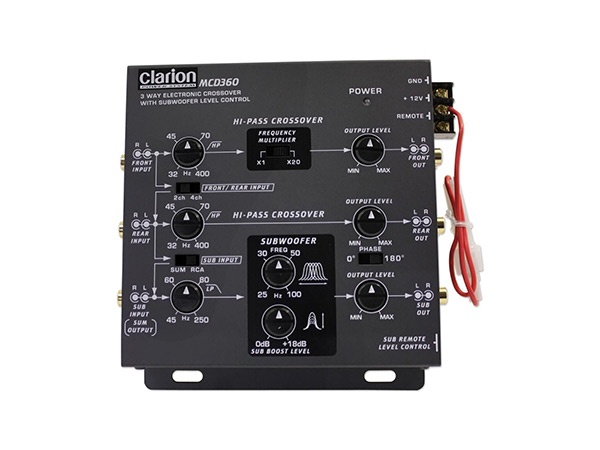
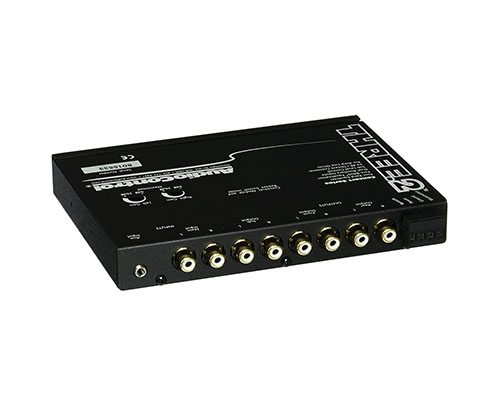
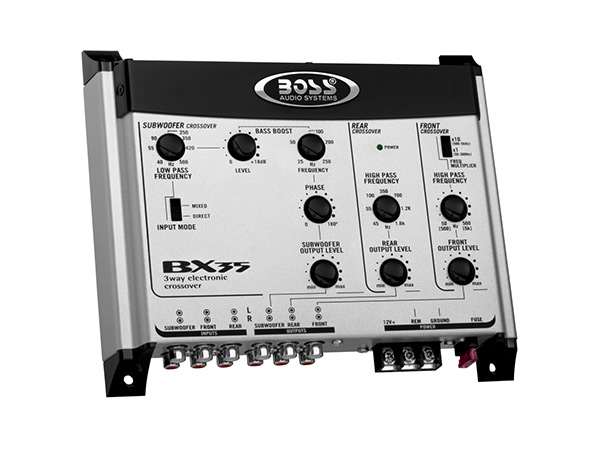
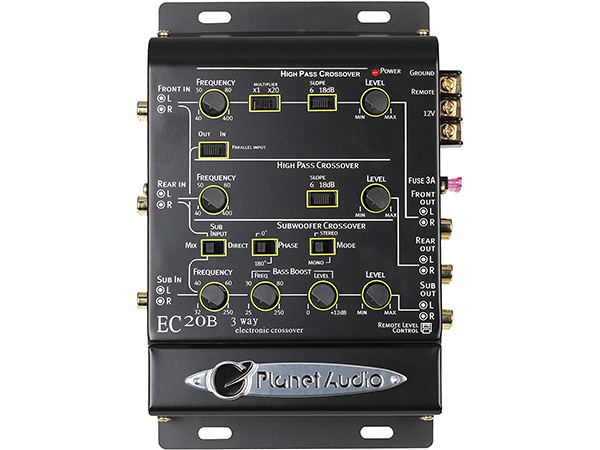
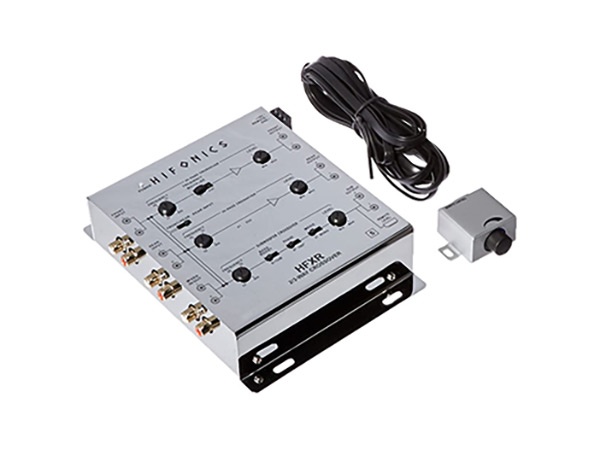
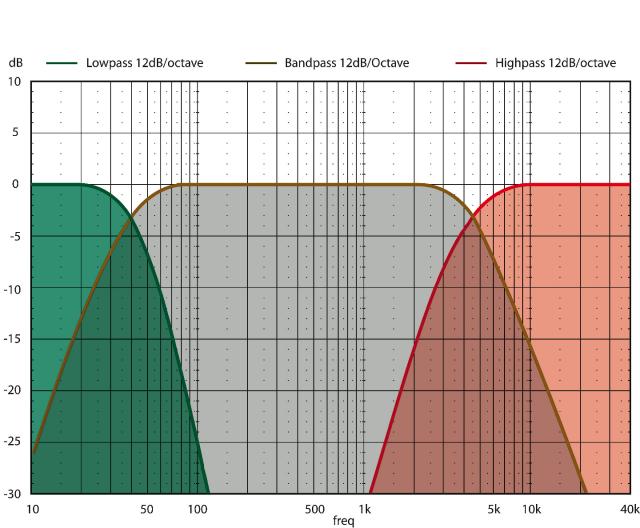
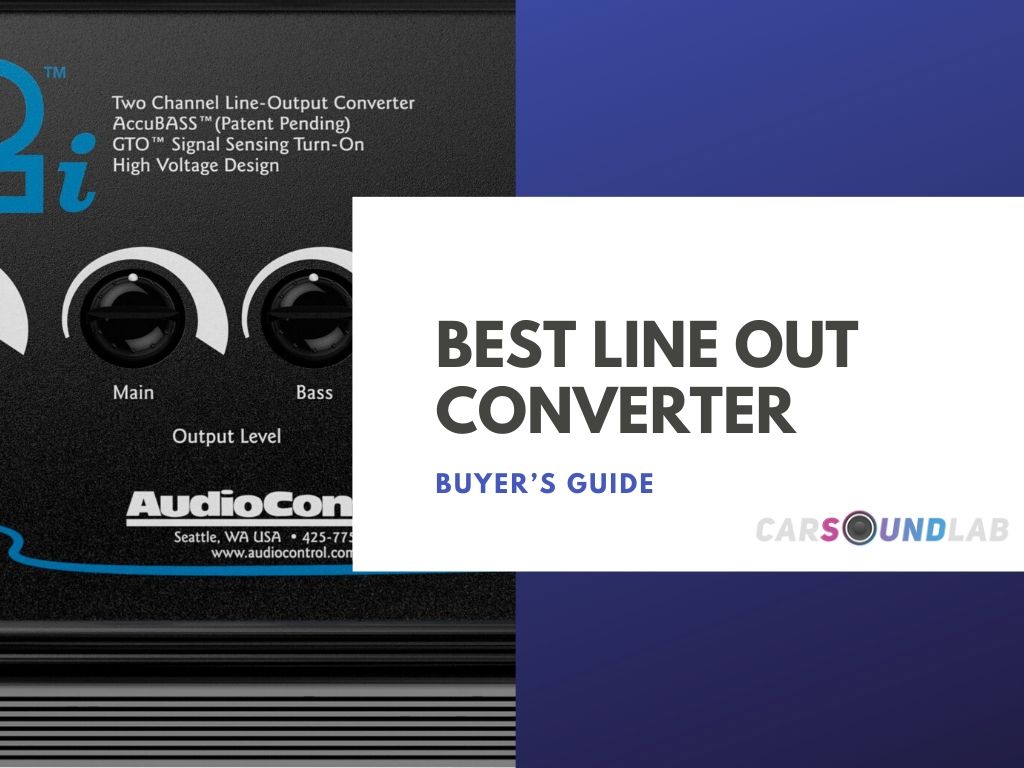

Leave a Reply